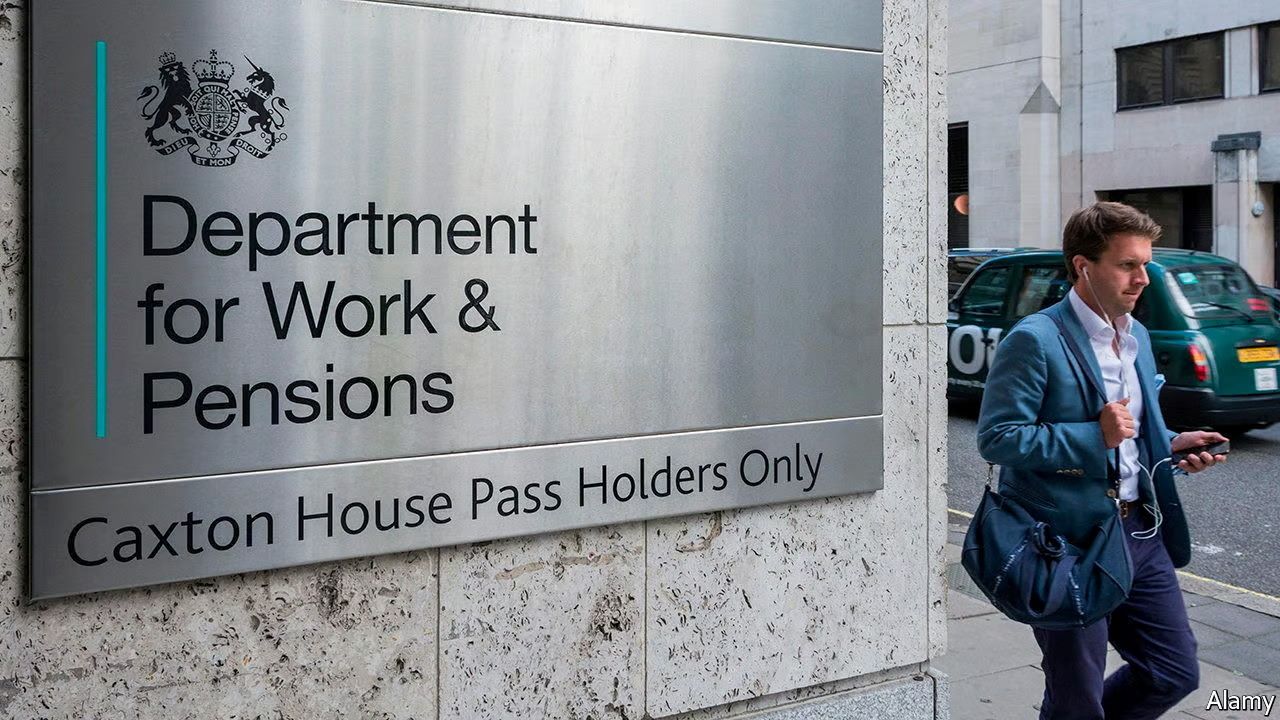Home>Finance>What Would The Beta Of This Company Be If It Had No Long-Term Debt In Its Capital Structure?


Finance
What Would The Beta Of This Company Be If It Had No Long-Term Debt In Its Capital Structure?
Modified: December 30, 2023
Discover the impact of long-term debt on a company's beta in its capital structure. Learn how finance plays a crucial role in determining beta without any long-term debt.
(Many of the links in this article redirect to a specific reviewed product. Your purchase of these products through affiliate links helps to generate commission for LiveWell, at no extra cost. Learn more)
Table of Contents
Introduction
When assessing the risk and potential returns of an investment, one important factor to consider is a company’s beta. Beta measures the volatility or sensitivity of a stock or portfolio to changes in the overall market. It is a key metric used by investors to gauge the level of risk associated with a particular investment.
However, beta is not solely dependent on market factors. It is also influenced by a company’s capital structure, specifically its use of long-term debt. The presence of debt in a company’s capital structure can impact its beta, as debt adds an additional layer of financial risk.
In this article, we will explore the concept of beta, and how a company’s capital structure, particularly the absence of long-term debt, can impact its beta. We will discuss the factors that affect beta, the relationship between capital structure and beta, and provide a step-by-step guide on how to calculate beta when a company has no long-term debt in its capital structure.
By understanding the relationship between a company’s capital structure and its beta, investors can make more informed decisions about the level of risk associated with an investment, helping them to better manage their portfolios and maximize potential returns.
Definition of Beta
Beta is a measure of the systematic risk or volatility of a particular investment in relation to the overall market. It quantifies the sensitivity of a stock or portfolio’s returns to fluctuations in the broader market. A stock with a beta of 1 indicates that it moves in line with the market, while a beta greater than 1 signifies that the stock is more volatile than the market. On the other hand, a beta less than 1 suggests that the stock is less volatile than the market.
Beta is a relative measure and is calculated by comparing the historical price movements of an asset to those of a benchmark, typically a market index such as the S&P 500. The benchmark is given a beta of 1, and the beta of the asset is determined based on the covariance of its returns with those of the benchmark. A beta greater than 1 implies that the stock is expected to move more intensely in the same direction as the market, while a beta less than 1 suggests that it will move with less intensity.
It is important to note that beta measures only systematic risk, which cannot be diversified away through portfolio diversification. It does not account for company-specific or idiosyncratic risks that can be mitigated through diversification. Therefore, beta should be used in conjunction with other risk measures to assess the overall risk profile of an investment.
By providing an indication of how a stock or portfolio is likely to respond to market movements, beta helps investors determine an appropriate asset allocation strategy and measure the risk-reward tradeoff of a particular investment.
Factors Affecting Beta
Several factors can influence the beta of a company or investment, contributing to its level of volatility and sensitivity to market movements. Understanding these factors is crucial for investors to make informed decisions about their portfolio and manage their risk effectively. Here are some key factors that can affect beta:
Industry and Sector: Different industries and sectors have varying levels of systematic risk. For example, technology companies may have higher betas due to their exposure to rapid changes in technology and market demand, while utilities companies may have lower betas due to their stable and regulated nature.
Company Size and Market Capitalization: Smaller companies tend to have higher betas as they are often more susceptible to market fluctuations and have limited resources to weather economic downturns. Larger, well-established companies with a larger market capitalization tend to have lower betas as they are often more stable and have diversified revenue streams.
Financial Leverage: The amount of debt a company has in its capital structure can affect its beta. Higher levels of financial leverage increase financial risk and the potential for higher returns, leading to a higher beta. Conversely, companies with lower or no debt tend to have lower betas as they have a more stable financial position.
Operational and Business Risk: Companies operating in inherently risky industries or with high business risk, such as those heavily reliant on a single product or market, are likely to have higher betas. On the other hand, companies with diversified operations or operating in less risky industries may have lower betas.
Market Conditions: Beta is influenced by the overall market conditions and investor sentiment. During times of economic uncertainty or market instability, betas tend to be higher as investors become more risk-averse and market volatility increases. In contrast, during stable and bullish market conditions, betas may be lower as risk appetite increases.
It is important to note that the factors mentioned above are not exhaustive, and other company-specific or market-specific factors can also impact beta. Additionally, beta is a historical measure and may not accurately predict future volatility. Therefore, it is essential for investors to consider multiple factors and conduct thorough analysis when assessing the beta of a company or investment.
Capital Structure and Beta
Capital structure refers to the proportion of a company’s financing that is obtained through various sources such as equity and debt. It plays a significant role in determining a company’s risk profile, including its beta. The capital structure of a company affects its beta through the inclusion of long-term debt, which adds financial leverage.
Long-term debt increases a company’s financial risk, as it requires regular interest payments and eventual repayment of principal. This added risk translates into a higher beta. The rationale behind this relationship is that when market conditions change, companies with higher debt levels may experience more significant fluctuations in their market value compared to companies with lower debt.
Essentially, by introducing debt to the capital structure, a company amplifies its exposure to market volatility. This amplification is reflected in a higher beta, indicating greater sensitivity to market movements.
On the other hand, a company with a capital structure that does not include long-term debt or significant financial leverage exhibits a lower financial risk. These companies typically have lower betas, as they are less susceptible to market volatility and have more stable cash flows.
It is important to note that the impact of capital structure on beta may vary across different industries and sectors. For example, industries such as utilities or consumer staples, which have stable cash flows and lower financial risk, generally have lower betas even if they have some long-term debt in their capital structure.
Investors should consider a company’s capital structure, including its long-term debt levels, when evaluating beta. It is important to assess the company’s ability to manage its debt obligations and whether the debt level is appropriate for its industry and market conditions.
Ultimately, capital structure is a critical component of a company’s risk profile and can significantly impact its beta. By understanding and analyzing a company’s capital structure, investors can gain insights into its risk profile and make informed decisions about their investment strategies.
Impact of Debt on Beta
Debt plays a crucial role in shaping a company’s beta, as it adds financial leverage and influences its risk profile. The presence of debt in a company’s capital structure can have both positive and negative impacts on beta. Let’s explore the key effects of debt on beta:
1. Increased Financial Risk: One of the primary impacts of debt on beta is that it increases the company’s financial risk. When a company has outstanding debt, it must make regular interest payments and eventually repay the principal. This obligation adds a layer of financial risk because the company needs to generate sufficient cash flow to meet these debt obligations. As a result, higher levels of debt increase the volatility of a company’s earnings and cash flows, which translates into higher beta.
2. Higher Equity Beta: Debt affects the equity beta of a company. Equity beta measures the sensitivity of a company’s stock price to changes in the market. When a company has debt, the risk is divided between equity owners and debt holders. As the company takes on more debt, the equity holders assume a larger portion of the risk, leading to a higher equity beta. This means that the stock price will be more volatile compared to a company with no or low levels of debt.
3. Magnified Returns: Debt can amplify the impact of market movements on a company’s returns. When the market is performing well, the presence of debt can enhance the positive returns for equity holders due to the leverage effect. However, when the market experiences downturns, the negative impact on the company’s earnings and stock price can be intensified. This magnification of returns is reflected in a higher beta for companies with debt in their capital structure.
4. Higher Cost of Capital: Another consequence of debt on beta is the increase in the company’s cost of capital. As debt increases, lenders and investors perceive the company as riskier, leading to higher required returns. This increased cost of capital affects the discount rate used in determining the present value of the company’s expected cash flows, thereby lowering its overall valuation. The higher cost of capital contributes to a higher beta, as it reflects the higher perceived risk associated with the company.
Understanding the impact of debt on beta is crucial for investors when assessing the risk and expected returns of an investment. It is important to note that while debt can increase beta and potentially lead to higher returns, it also amplifies the downside risk. Thus, investors must carefully evaluate a company’s debt levels in conjunction with its overall risk profile and financial stability.
Calculating Beta with No Long-Term Debt
When a company does not have any long-term debt in its capital structure, calculating its beta requires a slightly different approach compared to companies with debt. Without the additional risk introduced by debt, the beta primarily reflects the systematic risk associated with the company’s equity. Here’s a step-by-step guide on how to calculate the beta of a company with no long-term debt:
- Select a Benchmark: Choose a relevant market index as the benchmark against which the company’s performance will be compared. Common benchmarks include the S&P 500, NASDAQ, or industry-specific indices.
- Collect Historical Data: Gather historical price data for both the company and the chosen benchmark over a specific time period. The data should cover both positive and negative market trends to capture the stock’s response to various market conditions.
- Calculate Returns: Calculate the periodic returns for both the company and the benchmark. This is typically done on a monthly or quarterly basis to ensure an adequate sample size.
- Estimate Covariance and Variance: Calculate the covariance of the company’s returns with the benchmark’s returns. Additionally, calculate the variance of the benchmark’s returns.
- Calculate Beta: Finally, divide the covariance by the variance to obtain the beta. This ratio represents the sensitivity of the company’s stock price to movements in the overall market, adjusted for the absence of debt.
It is important to note that the calculation of beta relies on historical data, and as such, it is a backward-looking measure. While it provides insights into past relationships between the company’s stock and the market, it may not accurately predict future performance. Additionally, beta should be used in conjunction with other financial metrics and analysis to gain a more comprehensive understanding of the company’s risk profile.
Calculating beta for a company without long-term debt offers investors a clearer picture of the systematic risk associated purely with its equity. This calculation allows for a more accurate assessment of the company’s risk-reward tradeoff and aids in making informed investment decisions.
Example
To illustrate how the absence of long-term debt can impact the calculation of beta, let’s consider an example. Imagine a hypothetical company, XYZ Inc., which operates in the technology sector and has no long-term debt in its capital structure. We will calculate its beta using monthly returns and compare it to a benchmark, the S&P 500.
We collect historical price data for XYZ Inc. and the S&P 500 for the past three years. After calculating monthly returns for both the company and the benchmark, we estimate the covariance between XYZ Inc.’s returns and the benchmark’s returns. Additionally, we calculate the variance of the benchmark’s returns.
Using the calculation formula, we find that the covariance between XYZ Inc. and the S&P 500 is 0.0025, while the variance of the S&P 500 is 0.0018. Dividing the covariance by the variance, we obtain a beta of approximately 1.39.
This beta indicates that XYZ Inc.’s stock price is expected to be 1.39 times more volatile than the broad market represented by the S&P 500. As XYZ Inc. has no long-term debt, its beta primarily reflects the systematic risk associated with its equity. Investors can use this information to assess the level of risk associated with investing in XYZ Inc. compared to the overall market.
It is crucial to interpret beta in the context of the company’s industry and market conditions. For example, if the technology sector as a whole tends to have higher betas due to its inherent volatility, XYZ Inc.’s beta of 1.39 may be considered relatively normal. Comparing XYZ Inc.’s beta to other companies in the same industry can provide further insights into its risk profile.
Overall, this example demonstrates how the absence of long-term debt in a company’s capital structure affects the calculation of beta. It highlights the importance of analyzing a company’s risk profile in relation to its industry and market conditions when using beta as a measure of risk.
Conclusion
Understanding the relationship between a company’s capital structure and its beta is essential for investors looking to assess the risk and potential returns of an investment. While beta is primarily a measure of systematic risk, the presence or absence of long-term debt in a company’s capital structure can significantly influence its beta.
Long-term debt adds financial leverage and increases a company’s risk profile, resulting in a higher beta. This is because debt requires regular interest payments and eventual repayment of principal, adding volatility to the company’s cash flows and earnings. Consequently, companies with higher levels of debt are generally associated with higher betas.
On the other hand, a company that does not have long-term debt or significant financial leverage generally exhibits a lower risk profile. Without the additional financial risk introduced by debt, the beta primarily reflects the systematic risk associated with the company’s equity. Therefore, companies with no long-term debt typically have lower betas.
Calculating beta for a company without long-term debt involves selecting a benchmark, collecting historical data, estimating covariance and variance, and calculating the beta ratio. This calculation provides investors with valuable insights into a company’s sensitivity to market movements and helps them evaluate its risk-reward tradeoff more accurately.
It is important to note that beta should not be relied upon as the sole indicator of risk. It is just one piece of the puzzle when assessing the risk profile of an investment. Other financial metrics and analysis, such as fundamental analysis and qualitative factors, should be considered alongside beta to gain a comprehensive understanding of a company’s risk profile.
In conclusion, a company’s capital structure, specifically the presence or absence of long-term debt, can have a significant impact on its beta. By carefully evaluating a company’s capital structure and understanding how it influences beta, investors can make more informed decisions, manage their portfolios effectively, and navigate the complex world of finance with greater confidence.














